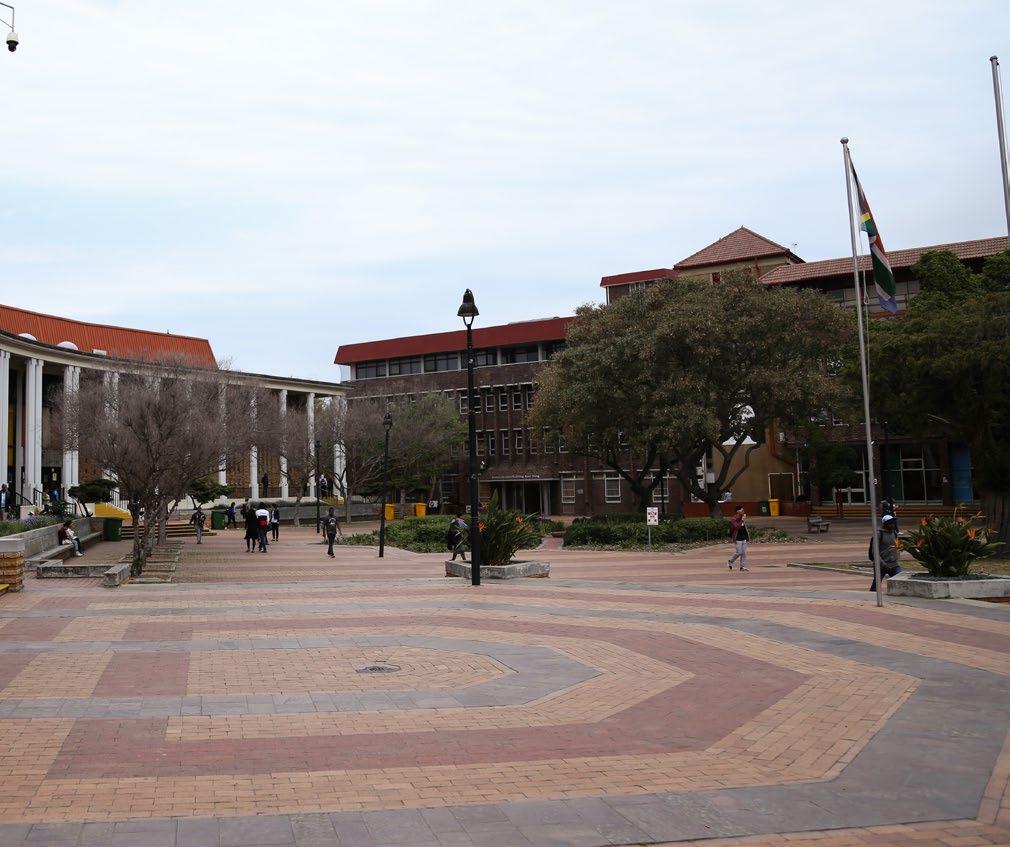
2 minute read
Prof. Vivienne Lawack
regulations excluding them during apartheid. We would have benefited greatly if we had implemented our own GI Bill, post-apartheid.
Boyer (1996) emphasised the following scholarships; scholarship of discovery - pushing back the frontiers of human knowledge; the scholarship of integration which focuses on producing interdisciplinary knowledge; this followed by the scholarship of sharing knowledge as widely as possible. The last of these interlocking scholarships is the scholarship of integration which implies a scholarship of application from theory to practice (Boyer, 1996).
The university embraces various forms of CE which ranges from community based education, interdisciplinary teaching and learning, service learning, problem-based learning, internships, community outreach and volunteerism. For this reason CEU adapted Boyer’s model, as it closely resembled the vision and mission of UWC. Below is an overview of the model.
Figure. 1 Scholarship of Engagement Model
Discussion of centric circles:
Scholarship of research aims at monitoring and evaluating the CE process through a structured reflective praxis.

Scholarship of integration aims at continuous facilitation integration and promotion of CE through capacity building, mentoring and coaching between role-players and stakeholders towards enhancing partnerships.
Scholarship of theory and practice aims at partnership and citizenry building for the purpose of empowerment.
Scholarship of application aims at facilitating sustainable communities through the recognition of indigenous knowledge and resilience.
Scholarship engagement facilitates an enabling environment for sustainable communities through CE and has its foundation and structure within Higher Education Institution frameworks.
chOice Of cOlOurS:
gOlD The community holds a wealth of indigenous knowledge and community resilience which is harnessed through teaching & learning, partnerships & networking, capacity building, mentoring/ coaching, community engagement, reflective practice, research and information sharing in line with national priorities.
Blue Partnership provides strength and opportunity. It signifies the limitless impact of partnerships.
reD Foundation of our philosophy and ethos, providing the framework within which we function and which governs our contect.
Scholarship of research Monitoring & Evaluation
Scholarship of integrationFacilitation & Promotion Partnership & CitizenryPartnership & CitizenryScholarship of theory & Practice
SchOlarShiP Of aPPlicatiOn Sustainable communities
Scholarship of Engagement HIGHER EDUCATION INSTITUTION (Policies, Mission, Ethos, etc, which GUIDE engagement)

Dean: Of artS anD humanitieS
Prof. Monwabisi Ralarala

In recent years, the Faculty has been engaged in concerted efforts to connect its research in humanities and teaching and learning to recognitive justice and public good. As evidence of this critical and giant step, the Faculty has, for example, repositioned itself in respect of its partnership with communities, the extent to which knowledge is generated and shared, and the degree to which local knowledge is valued and considered for integration into specialised knowledge. In essence, the scholarship of engagement has become one of the cornerstones, not only to reinforce the interconnectedness between communities and humanities, but also, in some way, to resuscitate the humanities. Appreciation and cultivation of scholarship around archives and museums, theatre and film are some of the beneficial research and creative outputs and enterprises involving the Faculty in its connectedness with the community.
The following citations from the various faculties are linked to the nine contact points of CE, teaching and learning; research; community engagement; service learning; work-integrated learning; community service; field education; internship; and volunteerism during the years 2015-2019.










